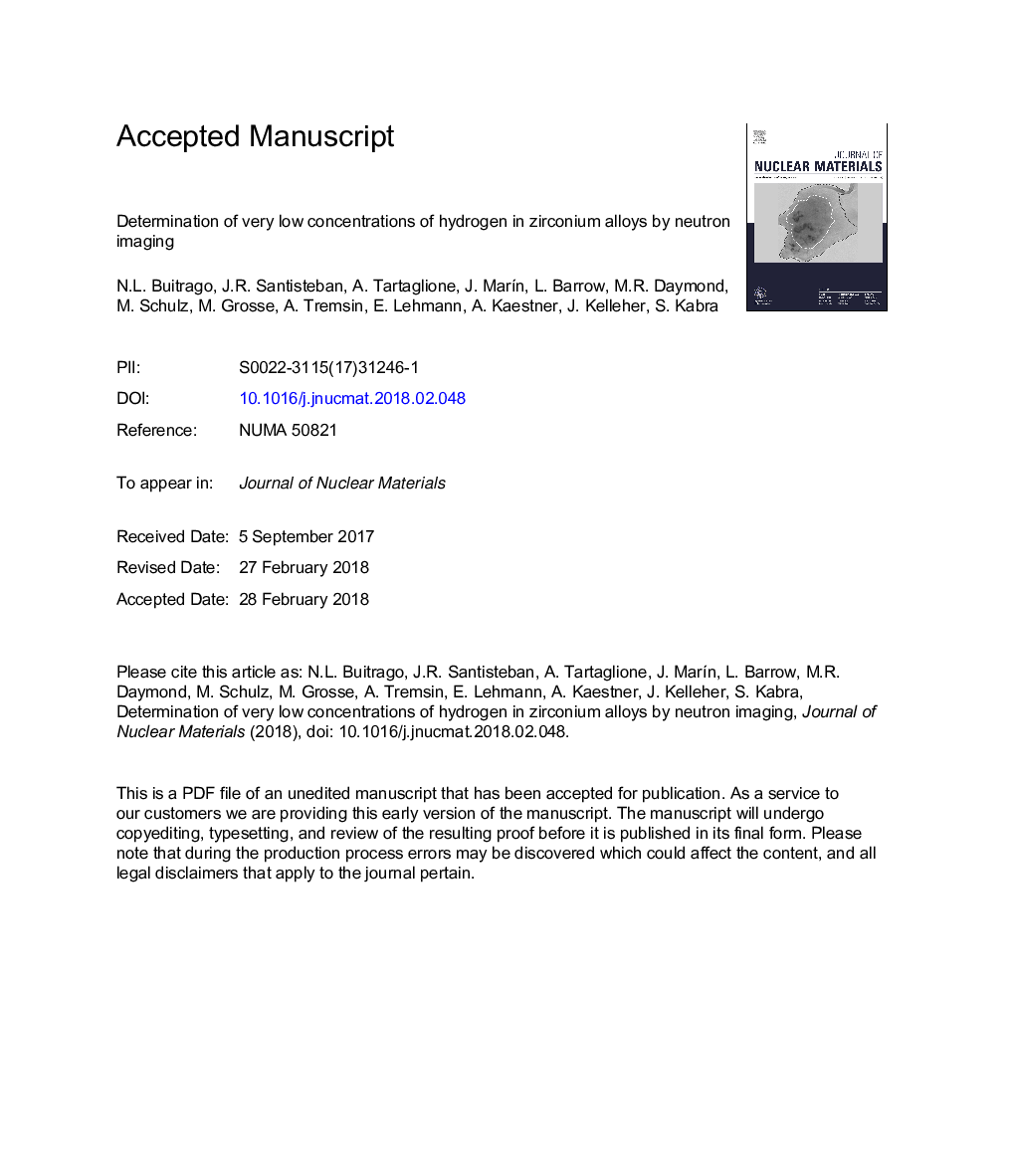| Article ID | Journal | Published Year | Pages | File Type |
|---|---|---|---|---|
| 7963252 | Journal of Nuclear Materials | 2018 | 35 Pages |
Abstract
Zr-based alloys are used in nuclear power plants because of a unique combination of very low neutron absorption and excellent mechanical properties and corrosion resistance at operating conditions. However, Hydrogen (H) or Deuterium ingress due to waterside corrosion during operation can embrittle these materials. In particular, Zr alloys are affected by Delayed Hydride Cracking (DHC), a stress-corrosion cracking mechanism operating at very low H content (â¼100-300â¯wt ppm), which involves the diffusion of H to the crack tip. H content in Zr alloys is commonly determined by destructive techniques such as inert gas fusion and vacuum extraction. In this work, we have used neutron imaging to non-destructively quantify the spatial distribution of H in Zr alloys specimens with a resolution of â¼5â¯wt ppm, an accuracy of â¼10â¯wt ppm and a spatial resolution of â¼25â¯Î¼mâ¯Ãâ¯5â¯mm x 10â¯mm. Non-destructive experiments performed on a comprehensive set of calibrated specimens of Zircaloy-2 and Zr2.5%Nb at four neutron facilities worldwide show the typical precision and repeatability of the technique. We have observed that the microstructure of the alloy plays an important role on the homogeneity of H across a specimen. We propose several strategies for performing H determinations without calibrated specimens, with the most precise results for neutrons having wavelengths longer than 5.7â¯Ã
.
Related Topics
Physical Sciences and Engineering
Energy
Nuclear Energy and Engineering
Authors
N.L. Buitrago, J.R. Santisteban, A. Tartaglione, J. MarÃn, L. Barrow, M.R. Daymond, M. Schulz, M. Grosse, A. Tremsin, E. Lehmann, A. Kaestner, J. Kelleher, S. Kabra,
